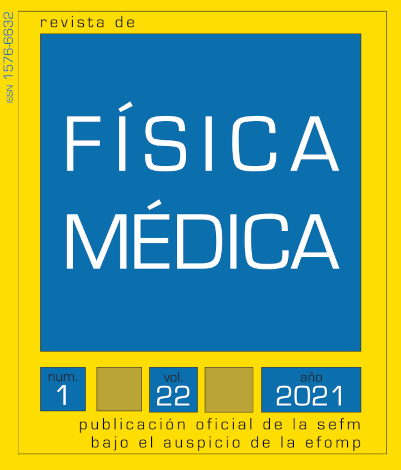Implementation and clinical use of adaptive radiotherapy. Report of the working group on adaptive radiotherapy of the Spanish Society of Medical Physics (SEFM)
DOI:
https://doi.org/10.37004/sefm/2021.22.1.004Keywords:
ART, off-line and on-line adaptive radiotherapy, DIR, QA of deformable image registration algorithmsAbstract
Adaptive Radiation Radiotherapy (ART) can be defined as the radiotherapy technique where the delivered absorbed dose is monitored during the treatment for clinical acceptability and modified, if necessary.
ART application represents a change in the radiotherapy process that implies the use of numerous additional resources, and its implementation has not yet been widely incorporated. Thus, even though the idea was introduced more than 20 years ago, to this day many of the aspects that define ART are still being studied: the action levels to proceed with the new treatment planning, the optimal time to adapt the treatment plan, the anatomical or dosimetric threshold that defines the need to adapt, the identification of the patients who would really benefit from the adaptation of the treatment, etc.
This report of the ART Working Group of the Spanish Society of Medical Physics (SEFM) aims to describe the principles of this technique, as well as the necessary elements for its implementation. The two main ART strategies regarding the application timescale are presented: off-line, intended to face progressive changes observed during treatment and on-line, to mitigate random changes. The state of the art in the application of ART to clinical practice for different anatomical locations is reviewed. One of the key instruments for its implementation is described: the deformable registration algorithms (DIR), exposing the principal similarity metrics, the similarity optimization methods, and the deformation models used, analyzing the characteristics of the algorithms of main software. Furthermore, given the importance of knowing the additional uncertainty introduced by the use of DIR algorithms, especially when they are used to deform the absorbed dose matrix, a section is dedicated to the validation of these algorithms, including the results for the main commercial software programs currently available. Finally, some recommendations are presented when applying ART in clinical practice.




